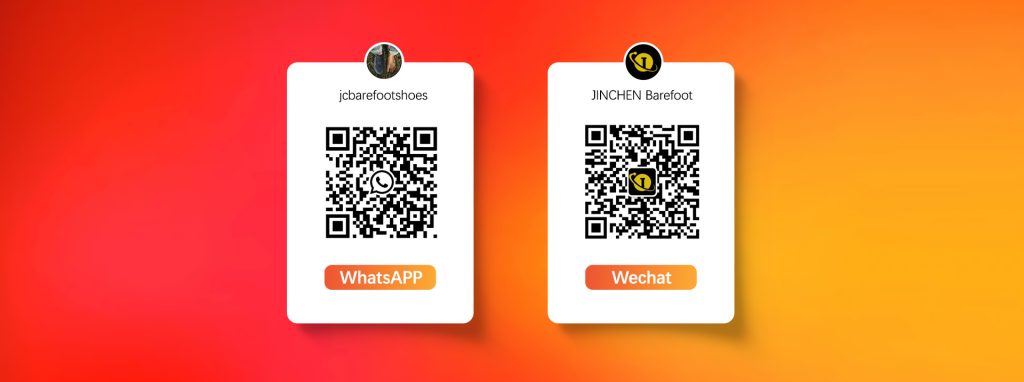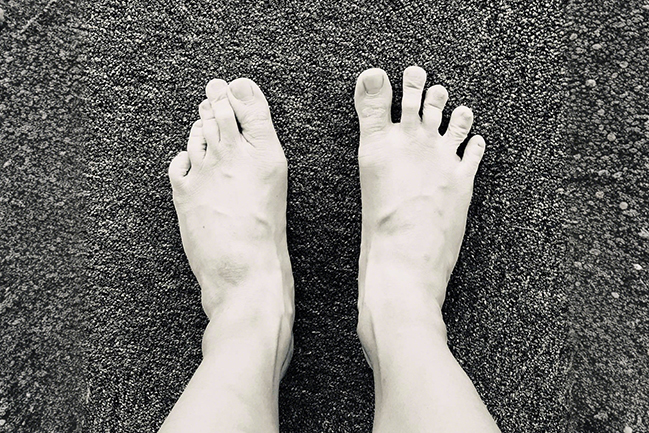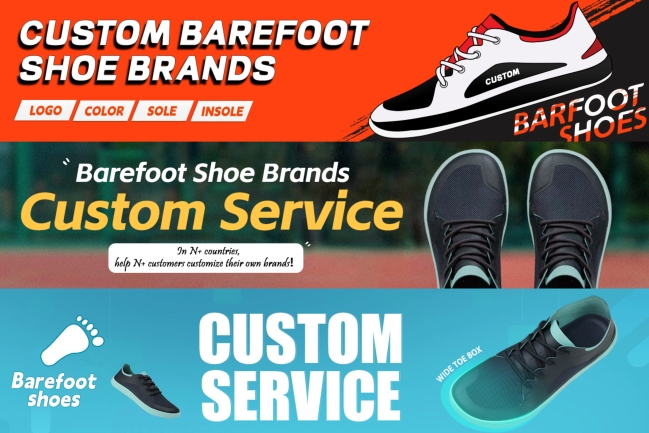In recent years, there has been a significant shift in the way people think about footwear, particularly in the context of physical therapy and overall foot health. Barefoot shoes, designed to mimic the experience of walking barefoot while providing minimal protection, have gained popularity among health-conscious individuals and are increasingly being recommended by physical therapists for their numerous benefits. As the use of barefoot shoes in physical therapy grows, we are witnessing a trend where these shoes are not just a fashion statement but a tool for promoting foot health and overall physical function.
What Are Barefoot Shoes?
Barefoot shoes, also known as minimalist shoes, are designed to allow the foot to move naturally. They typically feature:
Thin, flexible soles: Providing direct contact with the ground for enhanced sensory feedback.
Wide toe box: Allowing toes to spread naturally, preventing issues like bunions or hammertoes.
Zero drop design: Keeping the heel and forefoot at the same level to promote natural posture.
Unlike traditional shoes, which often have elevated heels and rigid structures that can alter foot mechanics, barefoot shoes promote a more natural gait and foot function. This design makes barefoot shoes an ideal choice for physical therapy applications aimed at enhancing foot health and overall musculoskeletal function.
Benefits of Barefoot Shoes in Physical Therapy
Physical therapists are recognizing the value of barefoot shoes in enhancing foot health and overall musculoskeletal function. Key benefits include:
| Benefit | Description |
| Improved Forefoot Width and Toe Alignment | By allowing toes to spread naturally, barefoot shoes help prevent issues like bunionsand hammertoes. |
| Strengthened Intrinsic Foot Muscles | The lack of support forces foot muscles to work harder, leading to stronger, moreresilient feet. |
| Better Posture and Alignment | Zero-drop design maintains natural foot alignment, improving posture and reducingstrain on knees, hips, and back. |
| Enhanced Joint Mobility | Flexible soles allow a full range of motion, improving joint health and mobility. |
| Increased Sensory Feedback | Thin soles enable better ground contact, providing sensory information that improvesbalance and proprioception. |
These benefits make barefoot shoes particularly useful in physical therapy for conditions such as flat feet, plantar fasciitis, and general foot pain. Many physical therapists recommend barefoot shoes as part of rehabilitation and strengthening programs. For example, experts at Continuous Motion Physical Therapy state: “We are strong advocates of barefoot shoes because they allow for more natural movement patterns that promote foot strength, balance, and overall musculoskeletal health.”
Scientific Backing
The advantages of barefoot shoes are not just theoretical but are supported by scientific research. For instance, a study published in the Journal of Foot and Ankle Research found that children who regularly go barefoot have healthier feet with higher arches and fewer deformities compared to those who always wear shoes (Foot Motion in Children’s Shoes). Another systematic review in the British Journal of Sports Medicine discussed the potential benefits of barefoot running, including reduced injury rates and improved running efficiency, though it also emphasized the need for careful transition to avoid injuries (Risks and Benefits of Barefoot Running).
Additionally, a biomechanical analysis of barefoot walking in children showed significant differences in kinematic parameters of the ankle, knee, and hip joints compared to shod walking, suggesting that barefoot walking is closer to natural foot function (Biomechanical Analysis of Barefoot Walking). However, research also indicates that the long-term effects of barefoot shoes require further study, particularly for adult users.
Despite these findings, physical therapists have mixed opinions. Some caution that rapid transition to barefoot shoes can lead to issues like stress fractures or Achilles tendonitis. For example, Specialized Physical Therapy notes: “For individuals with foot pain or musculoskeletal issues, barefoot shoes may increase risks, and we recommend using custom orthotics or strengthening exercises instead.”
Market Growth and Trends
The barefoot shoes market is experiencing robust growth, driven by increasing awareness of foot health and the desire for more natural footwear options. According to Allied Market Research, the global barefoot shoes market was valued at $471.09 million in 2021 and is projected to reach $788.7 million by 2031, growing at a CAGR of 5.3%. Other reports, such as Maximize Market Research, predict the market will reach $738.52 million by 2030 with a CAGR of 5.1%.
Market Report | 2021/2024 Market Size | Forecast Year | Forecast Market Size | CAGR |
|---|---|---|---|---|
Allied Market Research | $471.09M (2021) | 2031 | $788.7M | 5.3% |
Maximize Market Research | $521.36M (2023) | 2030 | $738.52M | 5.1% |
Future Market Insights | – | 2034 | $945.4M | 5.5% |
This growth is fueled by:
Increased Foot Health Awareness: Consumers are more aware of the impact of footwear on foot and overall health.
Popularity of Minimalist Footwear: Barefoot shoes are favored for their natural feel in running, hiking, and other outdoor activities.
Sustainability Trends: Many barefoot shoe brands use eco-friendly materials, appealing to sustainability-conscious consumers.
Growth in Online Retail: The rise of e-commerce has made barefoot shoes more accessible globally.
The adoption in physical therapy further drives this trend. As more physical therapists recommend barefoot shoes for rehabilitation and preventive care, the market sees new opportunities for growth.
How Physical Therapists Are Using Barefoot Shoes
Physical therapists are integrating barefoot shoes into their treatment plans to help patients improve foot strength, correct gait abnormalities, and recover from injuries. Common applications include:
Foot Strengthening Exercises: Barefoot shoes enhance the work of intrinsic foot muscles, such as the plantar arch, by requiring more active engagement.
Gait Correction: The zero-drop design helps patients regain natural gait patterns, reducing joint stress.
Rehabilitation Support: For patients with plantar fasciitis or running-related injuries, barefoot shoes may reduce stress on affected areas by promoting forefoot or midfoot landing (South Florida Reporter).
Many therapists recommend starting with short periods of wear and gradually increasing duration to allow the feet to adapt. For instance, Great Moves Physical Therapy notes: “There is research to show a number of benefits to being barefoot, but also detriments, so it’s important to consult with a physical therapist to see if it’s right for you.” Physical therapists also often incorporate specific exercises, such as plantar arch strengthening and balance drills, to enhance the effects of barefoot shoes.
Considerations and Precautions
While barefoot shoes offer many benefits, they may not be suitable for everyone. Key considerations include:
Individual Differences: People with severe flat feet, plantar fasciitis, or neuropathy may require additional support, making barefoot shoes unsuitable (Specialized Physical Therapy).
Transition Risks: Rapid transition to barefoot shoes can lead to foot or lower limb injuries, such as Achilles tendonitis or stress fractures. Studies suggest a gradual transition, which may take months or years (Transitioning to Minimal Footwear).
Professional Guidance: Consulting a physical therapist or podiatrist before switching to barefoot shoes is crucial. They can assess your foot condition and provide personalized recommendations.
For example, Freedom Physical Therapy Services advises: “If you’ve always worn traditional footwear, don’t jump straight into barefoot shoes. Gradually increase barefoot time and challenge your feet on varied surfaces.”
Opportunities for Barefoot Shoe Brands and Businesses
For barefoot shoe brands and businesses, the growing trend in physical therapy presents significant opportunities. Here are some strategies:
Partner with Physical Therapists: Collaborate with physical therapy clinics to promote barefoot shoes as a rehabilitation tool.
Educate the Market: Use blogs, webinars, and social media to inform consumers and professionals about the science and benefits of barefoot shoes.
Customized Products: Develop barefoot shoe models tailored to specific foot conditions or physical therapy needs, such as transitional shoes with enhanced arch support.
Sustainability Marketing: Highlight eco-friendly materials and production processes to attract sustainability-conscious consumers.
By capitalizing on this trend, barefoot shoe brands can establish a strong presence in the rapidly growing market while contributing to global foot health.
Barefoot shoes represent a significant advancement in footwear technology, offering a way to promote natural foot function and overall health. As physical therapists increasingly recognize their value, and as the market continues to grow, barefoot shoes are poised to become a staple in both preventive care and rehabilitation. For those interested in improving their foot health, consulting with a physical therapist about incorporating barefoot shoes into their routine could be a step in the right direction. As a Chinese factory providing customized services for global barefoot shoe brands, we are committed to supporting this trend by delivering high-quality, minimalist footwear solutions for physical therapy and other health-related applications.




